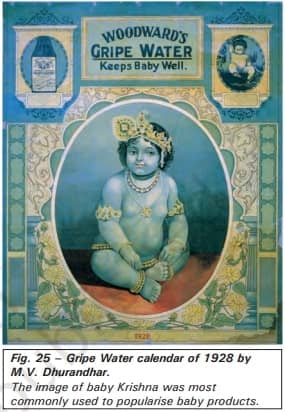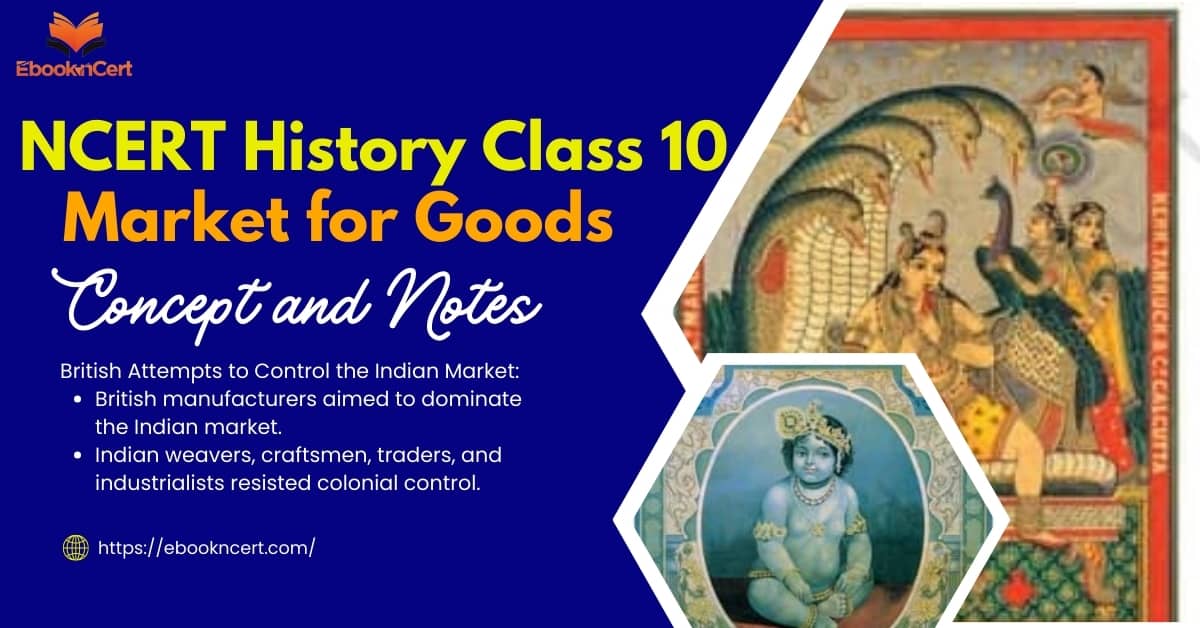NCERT History Class 10 | Market for Goods – Concept and Notes
Topic & sub-topics covered: Market for Goods, Conclusion on the chapter: The Age of Industrialisation (All single detail notes are exam-oriented).
We have discussed in-depth and exam-oriented pointers that can be asked in the board exam of class 10th about “Market for Goods, Conclusion” which is taken from the NCERT History book for class 10th chapter no. 4 “The Age of Industrialisation“.
Download NCERT History Chapter 4 Class 10th Notes PDF for The Age of Industrialisation
If you are in class 10th and looking for free NCERT History chapter 4 notes of the chapter The Age of Industrialisation class 10 that cover concepts, then you can download the free class 10th History chapter 4 notes “The Age of Industrialisation”. You should download this free PDF for future test or exam preparations.
Market for Goods

1. British Attempts to Control Indian Market:
- British manufacturers aimed to dominate the Indian market.
- Indian weavers, craftsmen, traders, and industrialists resisted colonial control.
2. Strategies of Resistance and Creation of Spaces:
- The resistance included demands for tariff protection and efforts to extend the market.
- The creation of spaces involved shaping a new consumer culture.
3. Role of Advertisements:
- Advertisements played a crucial role in creating new consumers.
- They made products appear desirable and necessary.

4. Historical Significance of Advertisements:
- Since the early industrial age, advertisements expanded markets and shaped consumer culture.
- Manchester industrialists used labels on cloth bundles to make their products familiar and convey quality.
5. Role of Labels:
- Labels carried both words and images, often beautifully illustrated.
- They featured images of Indian gods and goddesses to gain divine approval and make foreign products familiar.
6. Association with Religion in Advertisements:
- Images of gods on labels created an association with divinity, implying approval for the goods.
- Imprints of Krishna or Saraswati made foreign goods seem somewhat familiar to Indian consumers.
7. Use of Calendars in Advertising:
- Manufacturers printed calendars to popularize their products, especially among non-readers.
- Calendars, featuring gods and important figures, were displayed in various settings, reinforcing advertisements throughout the year.
8. Influence of Royal Figures:
- Advertisements featured figures of emperors and nawabs to convey product quality.
- Products associated with royal usage or endorsement were presented as unquestionably high in quality.
9. Nationalist Messaging in Advertisements:
- Indian manufacturers used advertisements to convey nationalist messages.
- Consumers were urged to support the nation by buying products produced by fellow Indians.
10. Advertisements as Vehicles of Swadeshi:
- Advertisements became a powerful vehicle for promoting the nationalist message of Swadeshi.
- Consumers were encouraged to buy products that contributed to the well-being of the nation.
Conclusion
1. Technological Changes in the Age of Industries:
- The age of industries brought about significant technological changes.
- The advent of factories marked a shift in production methods.
2. Growth of Factories:
- Industrialization led to the establishment and growth of factories.
- Factories became key centres of production and economic activity.
3. Emergence of a New Industrial Labor Force:
- The industrial age witnessed the creation of a new labour force.
- Workers in factories played a crucial role in the production process.
4. Persistence of Hand Technology:
- Despite industrialization, hand technology continued to be relevant.
- Hand-based methods coexisted with machine-based processes.
5. Significance of Small-Scale Production:
- Small-scale production remained integral to the industrial landscape.
- It continued to contribute to economic activities alongside large-scale factories.
Next & Previous Topics of NCERT/CBSE History Class 10 Chapter 4: The Age of Industrialisation
FAQ
Q1. How did British manufacturers attempt to control the Indian market?
Answer: British manufacturers aimed to dominate the Indian market by promoting their products and suppressing local industries.
Q2. What strategies did Indians employ to resist colonial control over the market?
Answer: Indian weavers, craftsmen, traders, and industrialists resisted colonial control through demands for tariff protection and efforts to expand the market.
Q3. Why were manufacturers inclined to use calendars in advertising?
Answer: Manufacturers used calendars to popularize their products, especially among non-readers, by featuring gods and important figures, reinforcing advertisements throughout the year.

